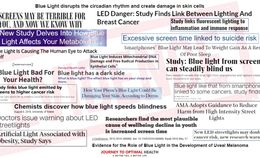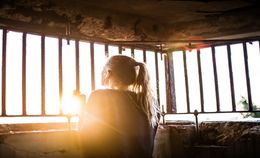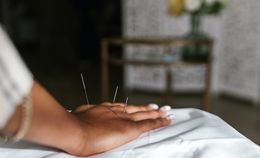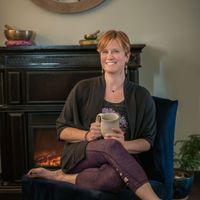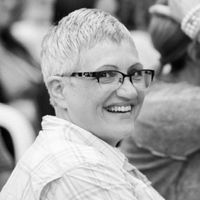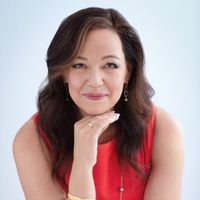Make sure you get eight hours of sleep. How many times have you heard that advice before? Although getting enough sleep is a key component of health and wellness, Often times, such advice falls on deaf ears. Why? Because insomnia and other sleep disorders can make it very challenging to get a good night?s sleep.
If you, or someone you know, lives with insomnia or another sleeping disorder, you may find yourself looking for support so you can improve the length and quality of your sleep. Some people have been turning to a natural and holistic therapy called craniosacral therapy to find relief from such sleep disorders.
Insomnia Other Sleep Disorders and Statistics
The American Sleep Association has kept data on insomnia and other sleep disorders. Here is a list of six known statistics:
-
Adults in the U.S. suffering a sleep disorder: 50 - 70 million
-
Have been struggling for a year or longer: 20-36%
-
Have challenges with snoring: 48.0%
-
Report falling asleep unintentionally during the day at least once in the previous month: 37.9%
-
Drowsy driving annual fatalities: 1,550
-
Non-fatal injuries annually: 40,000
How Craniosacral Therapy Can Work for Insomnia and Other Sleep Disorders?
Craniosacral Therapy or CST helps to enhance the body's ability to heal itself, a condition called homeostasis. The craniosacral system is a body hydraulic system, which pumps cerebral fluids from the sacrum to the brain. It is this hydraulic system that nurtures your body's parasympathetic nervous system. A craniosacral therapy practitioner tests for blockages using his/her hands to listen and respond to the craniosacral rhythm. When the flow restrictions are removed, this promotes relaxation and healing throughout the body.
During a craniosacral therapy session, the body enters a rapid eye movement cycle (REM), similar to the REM cycle when we sleep. During this phase, the body releases the pain and tension that the conscious mind has chosen to ignore. CST is a non-invasive therapy that stimulates your body to heal itself.
How Effective is Craniosacral Therapy for Insomnia?
Craniosacral Therapy has been explored in studies as an alternative, non-invasive solution to the inability to sleep. Craniosacral therapy can be used to treat a myriad of problems including sleep disorders. Valerie Collins , a Honolulu-based craniosacral therapist, explains that the light touch of the CST calms the body by allowing clients to enter into a deep state of relaxation, similar to meditation. But CST is not just for relaxation or curing sleep disorders, studies have shown it can potentially heal conditions like headaches, migraines, concussions, and autism bringing about general wellbeing.
Furthermore, craniosacral therapy can be highly effective as a treatment option for insomnia. Why? Because it deactivates the RAM (Reticular Alarm System) of the body. The RAM is a complex connection of nuclei in the brain. It is responsible for regulating the body's sleep-wake transitions.
Craniosacral therapy can also be effective for children living with insomnia and other sleep challenges. To find out how effective it can be, read: Craniosacral Therapy for Sleeping Disorders in Children
How Powerful is Craniosacral Therapy for Stress and Sleep Disorders?
In a study published in the Journal of Integrative Medicine, CST had a positive effect on autonomic nervous activity. The autonomic nervous system helps the body to rest and respond to stress.
The lead scientist in this study, Wanda Girsberger, a craniosacral therapist in Switzerland, further buttresses the potential of CST by examining the testimony of a stressed-out woman who also had indigestion plus concentration and sleep difficulties.
She said; "The regulation of the autonomic nervous system through CST, could enhance body functions such as relaxation, digestion, and clearer thinking - this will allow us to heal, grow and regulate our moods and many more. Thus craniosacral therapy (CST) supports all problems and symptoms and supports the body in different aspects both emotionally and physically."
Craniosacral therapy has been practiced for decades. It was first discovered by the osteopath, William Sutherland, who named the discipline cranial osteopathy in the thirties. In the seventies, John UpLedger adapted the process and changed the name to craniosacral therapy.
Before Sutherland's discovery, cranial bones were thought to be immobile and fixed. As Michael Kern a naturopath, osteopath and craniosacral therapist put it; "One of the things William Sutherland discovered very early was that these subtle rhythms were not only in the head but found throughout the whole body."
Sutherland found these breath-like motions in the core component of the central nervous system, the skull, tissues and fluids that were around the central nervous system, and in the sacrum located at the base of the spine.
He concluded that this breath-like movement found in these components are critical to health and well-being. And that if there was a blockage for any reason, it could lead to disease and illness. By unblocking the flow of the rhythmic movements, you restore both mental and physical health.
While research is predominantly anecdotal for now at least, craniosacral therapy has proven to have immense benefits. The current evidence suggests you will no longer depend on boring reads to fall into a sweet slumber. You will effortlessly fall asleep when you need to.
Number of Recommended Sessions
The number of sessions that will be needed for insomnia and other sleep disorders depends on each individual person's health needs. There are times where insomnia is the only health condition that a person is experiencing. Although more often, people who are living with insomnia or other sleep disorders are also living with other symptoms and health challenges.
When you go in to see a craniosacral therapy for insomnia or another sleep disorder, the practitioner will conduct an interview to assess your needs which may end up helping you with not only your insomnia but also your headaches or other health issues.
For this reason, it is important to speak to your craniosacral therapy practitioner about all your health and wellness needs, to help determine the best number of sessions and the frequency of your sessions.
In general three-ten weekly sessions is what is often recommended for many health conditions when it comes to craniosacral therapy. Bi-weekly or monthly sessions may be suggested after progress has been made for maintenance.
Cost
The average price per session in the country is $70-$170. If you take into consideration that the average recommended number of sessions is: three-to-ten sessions ?you can expect to pay $700 on the low end of the spectrum and $1,700 on the high end of the spectrum. For more information, read: How Much Does Craniosacral Therapy Cost?
References :
Craniosacral Therapy for Better Sleep. (n.d.). Retrieved April 14, 2019, from https://www.iahe.com/docs/articles/Article_-_CST_for_Better_Sleep.pdf
Excessive Daytime Sleepiness - American Sleep Association. (n.d.). Retrieved April 14, 2019, from https://www.sleepassociation.org/sleep-disorders/more-sleep-disorders/excessive-daytime-sleepiness/
Mataran-Penarrocha, G. A., Castro-Sanchez, A. M., Garcia, G. C., Moreno-Lorenzo, C., Carreno, T. P., & Zafra, M. D. (2011). Influence of craniosacral therapy on anxiety, depression, and quality of life in patients with fibromyalgia. Evidence-based complementary and alternative medicine : eCAM, 2011, 178769. doi:10.1093/ecam/nep125. Retrieved April 14, 2019, from https://www.ncbi.nlm.nih.gov/pmc/articles/PMC3135864/
National Sleep Awareness Week Unhealthy Sleep-Related ... (n.d.). Retrieved April 14, 2019, from https://www.cdc.gov/mmwr/pdf/wk/mm6008.pdf
The use of CranioSacral therapy for Autism Spectrum Disorders: Benefits from the viewpoints of parents, clients, and therapists. Kratz, Susan Vaughan et al. Journal of Bodywork and Movement Therapies, Volume 21, Issue 1, 19 - 29. Retrieved April 14, 2019, from http://massagetherapyfoundation.org/wp-content/uploads/4-Susan-Kratz_Craniosacral-for-autism_2016.pdf
Torday, J. S. (2015, September 15). Homeostasis as the Mechanism of Evolution. Retrieved April 14, 2019, from https://www.ncbi.nlm.nih.gov/pmc/articles/PMC4588151



